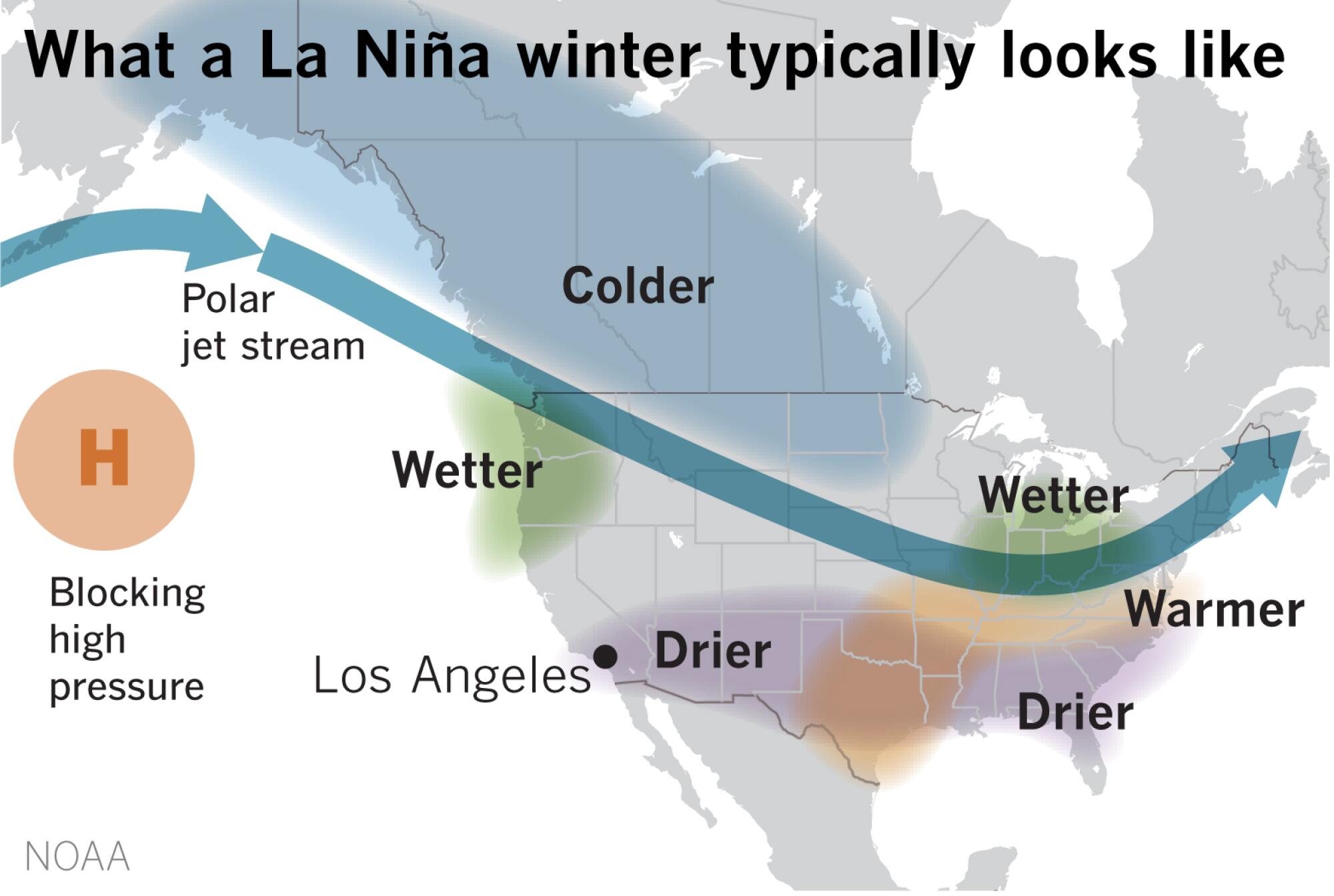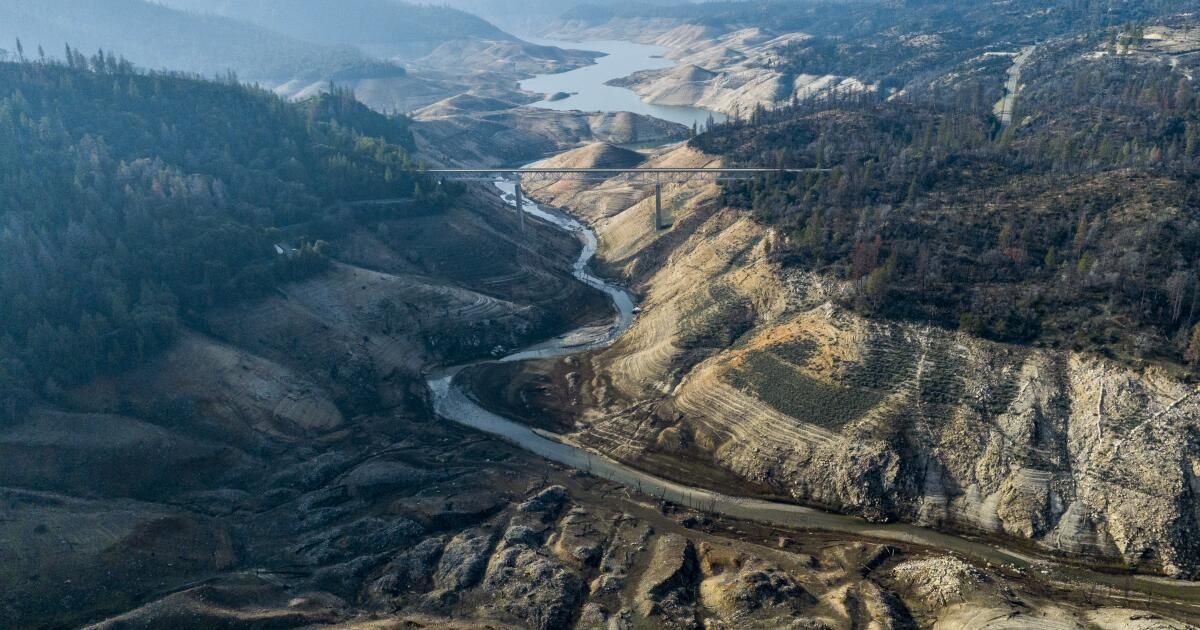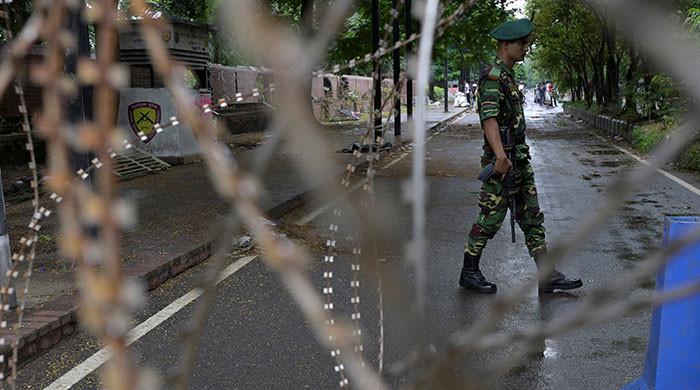As La Niña gains strength in the tropical Pacific, forecasters warn the weather pattern could plunge California back into drought conditions in the coming months.
La Niña is the driest component of the El Niño-Southern Oscillation, or ENSO, system that is a major driver of climate and weather patterns around the world. Its warm, wet counterpart, El Niño, was last present from July 2023 through this spring, and was linked to record-breaking global temperatures and California’s extraordinarily wet winter.
Although ENSO conditions are neutral for now, the arrival of La Niña appears increasingly imminent. There is a 66% chance it will develop between September and November and a 74% chance it will persist through the winter, according to the National Oceanic and Atmospheric Administration.
Aggressive and shocking reports on climate change, the environment, health and science.
On the East Coast, that could mean a Hurricane season continues to be activeBut in the West, and particularly in Southern California, it could signal a return of drought.
“Drought episodes are on the wane and coming back, and many of them are associated with La Niña,” said Brad Pugh, a meteorologist at NOAA’s Climate Prediction Center. “The good news is that [California’s] “We are currently out of drought, but with La Niña forecast through the winter, Southern California and the Southwest will be vulnerable to renewed drought.”

A La Niña phenomenon generally means a drier winter in the southern United States.
(Paul Duginski/Los Angeles Times)
La Niña was last present from 2020 to 2023, a period that included the three driest years on record in California. The arid period reduced reservoirs to record lows, triggered the strictest water restrictions in history in Southern California and helped fuel the state’s worst wildfire seasons on record.
The last few months have already shown a certain regression towards drought, partly because record-breaking heat It has been extracting moisture from the air and the landscape.
Over the past eight weeks, “the demand for moisture from the atmosphere has been exceptional due to warm temperatures,” Pugh said.
The latest update to the U.S. Drought Monitor shows about 17% of California is now classified as abnormally dry, up from just over 1% three months ago.
However, there are no guarantees.
La Niña only tilts the odds toward drought (it does not guarantee it) and its arrival has already been delayed compared to previous projections.
In fact, just a few months ago there was a strong chance that El Niño would quickly transform into La Niña this summer.
“It was thought that we would probably be in a La Niña episode, or close to it, by this point in the summer,” said Tom DiLiberto, an ENSO forecaster with NOAA. “Clearly not yet. We’re still waiting for it to emerge, now in the fall.”
The slow start could be because the planet's oceans are taking longer to cool after hitting record temperatures over the past year. La Niña is defined in part by periods of below-average surface temperatures in the Pacific, as well as a northward shift of the jet stream, the atmospheric track for Pacific storms.
“We haven't seen ocean temperatures sufficiently reflect that cooling… and we haven't seen the atmosphere cooling either,” DiLiberto said.
Still, he is relatively confident that La Niña will emerge because there is a large area of below-average water just below the surface of the Pacific Ocean that is “slowly but surely moving toward the surface,” DiLiberto said.
“So the signs are still there,” he said. “It’s just that instead of running toward La Niña, we’re walking.”
The effects of La Niña are not uniform either.
While the pattern is associated with drought in Southern California, its signal is more ambiguous in the Bay Area and the northern part of the state. In the Pacific Northwest, it tends to bring wetter-than-average conditions.
Nathan Lenssen, a climate scientist at the National Center for Atmospheric Research and the Colorado School of Mines, said he is hopeful that La Niña will not lead to another year of drought in California, especially considering the explosive forest fires It has already been seen throughout the state this year.
But he said people need to be prepared, both for drought and for other extreme weather events that are becoming more common because of man-made climate change.
“What we also know is that intense storms are becoming more intense,” Lenssen said. “So, when it comes to things like flooding, we’re not out of the woods yet, even with La Niña.”
In fact, La Niña was also present during the state's record-wet winter of 2022-23, he noted.
Those hoping for relief from the planet's scorching heat will also have to wait a little longer.
The latest seasonal outlook released by NOAA calls for above-normal temperatures across much of the continental United States through at least November, with the greatest likelihood of above-normal temperatures in New England and parts of the Southwest.
The West Coast and Pacific Northwest show equal chances of above- and below-normal temperatures, the forecast shows.
The lack of cooling and the delayed onset of La Niña could also have implications for overall year-round temperatures.
There is currently a 77% chance that 2024 will surpass 2023 as the planet's warmest year on record, and a nearly 100% chance that it will be among the top five warmest years, according to Karin Gleason, chief of the monitoring section at NOAA's National Centers for Environmental Information.
The forecast also indicates that drought will continue regardless of when La Niña takes hold. Below-normal precipitation is likely in the Southwest and Southern California, as well as parts of the Great Plains, during November, according to forecasts.
Pugh, of the Climate Prediction Center, said he still expects La Niña to begin to exert its influence this fall.
However, its strength remains to be determined, and models currently show a wide range of probabilities from weak to moderate.
“If La Niña continues through the winter, we could expect drier than normal conditions in Southern California and the Southwest,” Pugh said. “So I would say that as winter progresses, drought could return in those areas.”
Fact Sheet
Towards a more sustainable California
Receive Boiling Point, our newsletter exploring climate change, energy and the environment, and be part of the conversation – and the solution.
You may occasionally receive promotional content from the Los Angeles Times.












